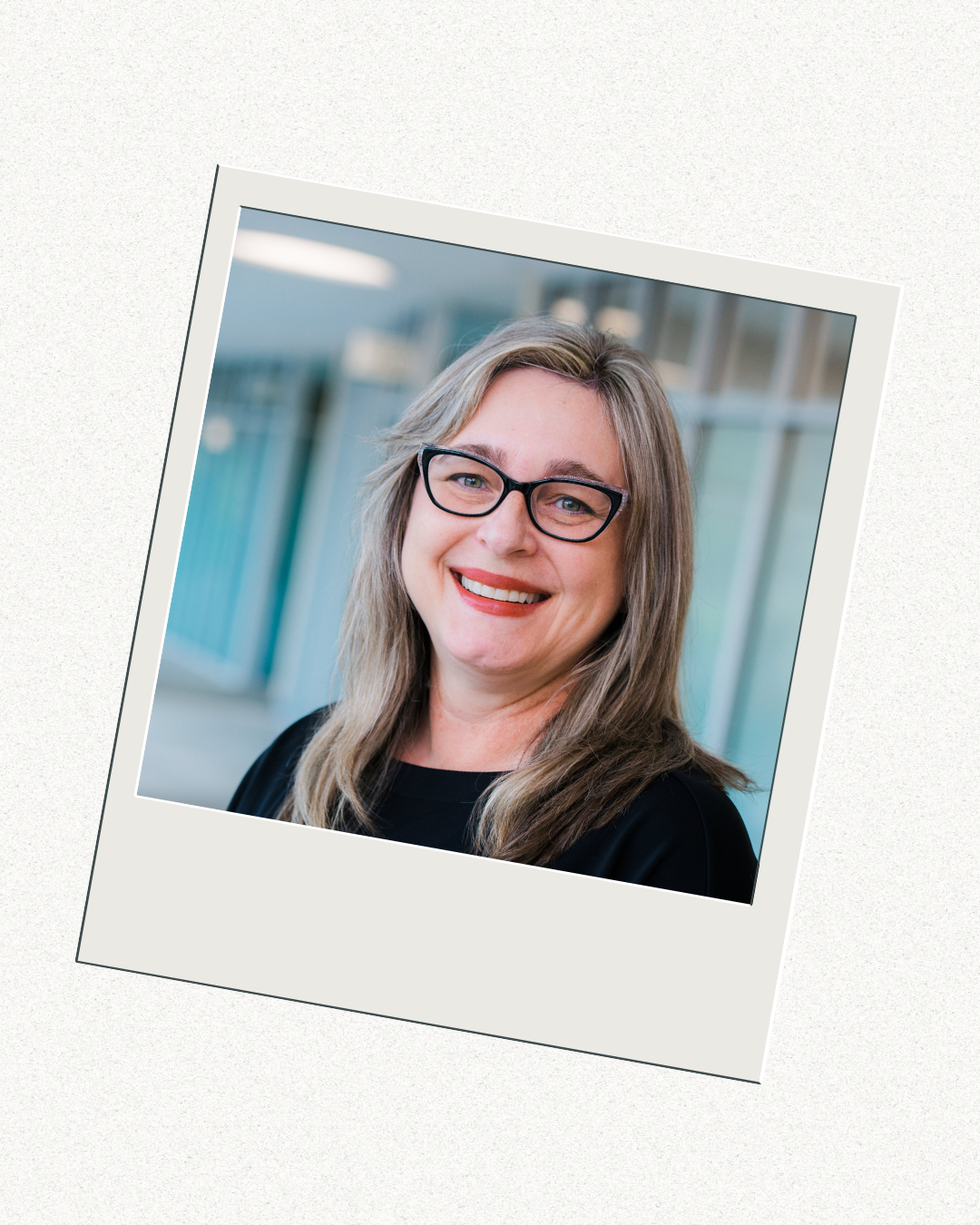Day Two of #SWDE2017 – Professional Learning Networks for Social Work
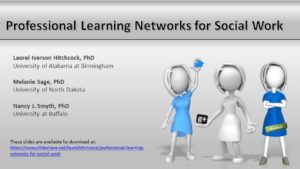 On April 13th, Melanie Sage, Nancy J. Smyth and I presented at the third annual Social Work Distance Education Conference sponsored by Our Lady of the Lake University’s Worden School of Social Service.
On April 13th, Melanie Sage, Nancy J. Smyth and I presented at the third annual Social Work Distance Education Conference sponsored by Our Lady of the Lake University’s Worden School of Social Service.
Our workshop informed participants about the mechanics as well as the advantages and disadvantages of professional learning networks (PLN), both as a scholar and in the classroom. A professional learning network (also known as a personalized learning network) includes technology-based tools and processes used by a social worker to stay up-to-date and share information about current news, practice knowledge, and the latest research findings. Participants learned how to establish and grow their own PLN, integrate PLNs into a classroom or curriculum, and appreciate how the theory of Connectivism (Siemens, 2005) informs the practice of PLNs.
You can access a copy of the slides here: https://www.slideshare.net/laurelhitchcock/professional-learning-networks-for-social-work.
A copy of the Professional Learning Network (PLN) Worksheet shared during the session is available here: https://drive.google.com/file/d/0ByR_E-iQH7PdT2t1WV9YYnlZV00/view?usp=sharing
Review of #SWDE2016
In case you didn’t make it to the Second Annual Social Work Distance Education Conference (#SWDE2016) in Indianapolis this year, there are plenty of online resources to make you feel like you were there…almost.
First, the conference website has a downloadable copy of the program from this year and last year (2015), and will soon have copies of handouts from this year’s breakout sessions. You can also find handouts from last year’s sessions as well as videos from the plenary sessions. Check back soon for this year’s information.
Next, Sean Erreger (@StuckonSW) created a Storify transcript of tweets from the conference, using the conference hashtag #SWDE2016. This transcript will show you who was tweeting and what they were saying about the conference and individual sessions. You can also search for the hashtag directly on Twitter to see the same tweets. You should also check out Sean’s video where he interviews three of the conference’s participants – Melanie Sage, Todd Sage & Linda Grobman.
Finally, here are some blog posts about happenings at the conference:
Tools for Practice Tuesday: Keeping up with #SWDE2016: This post is by Sean Erreger who observed the conference from afar.
Social Work in Distance Education (SWDE) 2016 Conference: This post is Melanie Sage who attended the conference.
#SWDE2016 Incorporating Digital & Social Technologies into Social Work Education: This post highlights the session that Melanie Sage, Nancy J. Smyth and I did about incorporating technology in teaching.
#SWDE2016 Teaching & Learning Professional Social Work Skills w/ Twitter: This post describes the conference session about the work Jimmy Young and I have done on using Twitter in the Classroom.
Did anyone else blog about the conference? Please post a comment and I will add your post this list!
How to cite this post:
Hitchcock, L. I. (2016, May 2).Review of #SWDE2016 [Blog Post]. Retrieved from https://laureliversonhitchcock.org/2016/05/02/review-of-swde2016/.
Job Shadowing on Twitter
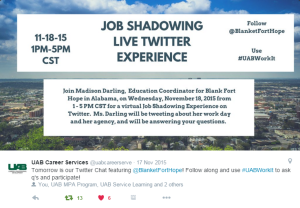 I’m always looking for a new way to incorporate Twitter into my social work courses. So I was pleased when my colleague Joy Jones with UAB’s Career and Professional Services suggested a new idea to me – a virtual job shadowing experience on Twitter. The event goes like this – a professional agrees to tweet about her job during a set date and time, students can follow along via Twitter, and then tweet back questions or comments to the professional. Similar to a live twitter chat, students can use a computer, tablet or mobile device from anywhere, offering flexibility and the opportunity to engage with others who are also following the job shadowing. Joy had all the details worked out for an event including the job shadowing candidate, logistics, and a hashtag. All I had to do was recruit the students. I offered it as an extra credit opportunity for students in my two classes last semester.
I’m always looking for a new way to incorporate Twitter into my social work courses. So I was pleased when my colleague Joy Jones with UAB’s Career and Professional Services suggested a new idea to me – a virtual job shadowing experience on Twitter. The event goes like this – a professional agrees to tweet about her job during a set date and time, students can follow along via Twitter, and then tweet back questions or comments to the professional. Similar to a live twitter chat, students can use a computer, tablet or mobile device from anywhere, offering flexibility and the opportunity to engage with others who are also following the job shadowing. Joy had all the details worked out for an event including the job shadowing candidate, logistics, and a hashtag. All I had to do was recruit the students. I offered it as an extra credit opportunity for students in my two classes last semester.
The event happened on 11/18/15 from 1 – 5 pm with Madison Darling from Blanket Fort Hope, a local non-profit agency in Alabama fighting child human trafficking. Madison agreed to tweet every 30 minutes about what she was doing that day and answer questions from students as frequently as possible. We had about fifteen participants total, along with myself and Joy. Questions ranged from “what is like working with children” to “how do I volunteer with your agency.” Madison and one of her colleagues did a great job answering questions and sharing about their agency and their job duties. Not only were my students able to network with professionals, a connection was created between my academic department, our campus career services and a community partner. Click here for a link to the transcript from the event, where you can read the tweets.
Joy and I will working on more of job shadowing events in the coming semester, and here are some suggestions I have for other social work faculty interested in hosting a similar event and/or incorporating this type of job shadowing into a learning activity:
Social Work Scholarship in the Age of Social Media
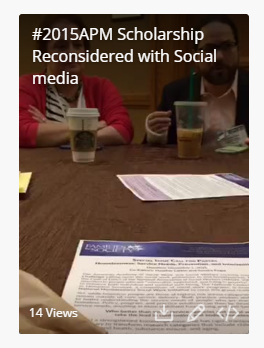 It has been almost two months since the Council on Social Work Education’s Annual Program Meeting in Denver this past October (#APM2015), and I have been thinking a lot about one of the round table discussions I attended. The topic was “Blogs, Podcasts, and Tweets: Reconsidering Scholarship in the Age of Social Media” and the conversation was led by Jonathan Singer of the School of Social Work at Loyola University and Nancy J. Smyth of School of Social Work at the University at Buffalo. Its purpose was to engage participants in a dialogue about the ways social media are changing how social work educators and scholars think about, produce, disseminate and measure the outcomes of scholarship in social work. I recorded the discussion with Periscope, a video recording app for Twitter, and you can watch the video here. Be warned – the discussion started at 7:30 AM, requiring me to juggle my mobile phone with a large cappuccino.
It has been almost two months since the Council on Social Work Education’s Annual Program Meeting in Denver this past October (#APM2015), and I have been thinking a lot about one of the round table discussions I attended. The topic was “Blogs, Podcasts, and Tweets: Reconsidering Scholarship in the Age of Social Media” and the conversation was led by Jonathan Singer of the School of Social Work at Loyola University and Nancy J. Smyth of School of Social Work at the University at Buffalo. Its purpose was to engage participants in a dialogue about the ways social media are changing how social work educators and scholars think about, produce, disseminate and measure the outcomes of scholarship in social work. I recorded the discussion with Periscope, a video recording app for Twitter, and you can watch the video here. Be warned – the discussion started at 7:30 AM, requiring me to juggle my mobile phone with a large cappuccino.
There were about twenty other people present, representing all areas of social work academia (tenured and nontenured; administrators, researchers and teachers; large research institutions to small liberal arts colleges). Here are just some of the questions or concerns mentioned during this discussion:
– How can digital content (blog posts, tweets, podcasts) be incorporated into the tenure and promotion process?
– What is the best way to share ideas about scholarship via social media? Will it get scooped?
– How do we ensure a level of quality with social work scholarship that is published via social media?
I am not sure any of us walked away from the discussion with the answers to all our questions, but I believe the consensus was that social and digital media are powerful tools for sharing and discussing social work scholarship. To be clear, I’m not arguing that social and digital media will replace the traditional forms of social work scholarship such as journals, books and conference presentations. I know that writing this blog will not get me tenure, but it does provide me with different ways to connect with other scholars, share ideas and write about topics that don’t fit into traditional publication avenues. Social media provide vital and rich ways to share, curate and discuss practice and research in social work. I am convinced that today’s social work faculty need to become savvy enough to share and discuss social work scholarship in digital environments. Here are my three reasons for using social media as part of my scholarship:
Online Toolkit for developing a Personal Learning Network with Twitter
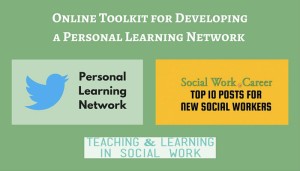 One of the benefits of having an online presence is making connections with professionals from all over the world. I met Dorlee Michaeli, MBA, LMSW over Twitter a year or so ago. She created and manages Social Work.Career, a blog that provides a variety of resources to help advance an individual’s social work career for current students or experienced mental health professionals. In addition to career-related resources, there are interviews, key learnings from conferences/workshops, licensure exam tips, self-care guidance and more for life-long learning as a social work professional.
One of the benefits of having an online presence is making connections with professionals from all over the world. I met Dorlee Michaeli, MBA, LMSW over Twitter a year or so ago. She created and manages Social Work.Career, a blog that provides a variety of resources to help advance an individual’s social work career for current students or experienced mental health professionals. In addition to career-related resources, there are interviews, key learnings from conferences/workshops, licensure exam tips, self-care guidance and more for life-long learning as a social work professional.
This summer, we created online toolkits for social work educators based on our blogs. Dorlee’s toolkit, Social Work Career’s Online Toolkit for the Social Work Educator, showcases several blog posts from Social Work.Career that will help prepare undergraduate or graduate social work students become more prepared for a career in social work. Also included with the toolkit are some possible classroom assignments/tasks. We tip our hat to Ellen Belluomini who wrote this blog post; she was our inspiration for creating the exercises to meet the 2015 CSWE Social Work Competencies.
Here is my toolkit about developing a personal learning network (PLN) with Twitter:
A personal learning network (PLN) offers social workers and students a practical tool to stay current and share information about latest professional news, practice knowledge, and cutting-edge research findings. I recently wrote about how a social worker can set-up a PLN using professional accounts on different social media platforms.
My favorite social media platform for my own PLN is Twitter, and this post offers tips for using Twitter effectively to maintain and engage with your PLN. All of these tips come from my blog, Teaching & Learning in Social Work, which focuses on teaching and learning in social work. While some of the original posts focus on the social work classroom, the practices and content can be easily adapted by any social work practitioner for their own use with a PLN. Here are eight great ideas for using Twitter with your PLN:
Personal Learning Networks for Social Workers
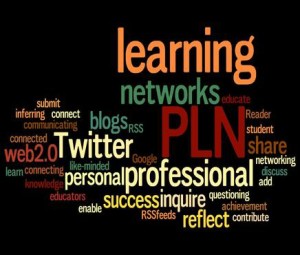 Actually, you probably already have a professional learning network (PLN) of your own, and didn’t even notice it. A professional learning network (also known as a personalized learning network) includes the tools and processes used by a social worker to stay up-to-date and share information about current news, practice knowledge and the latest research findings. Prior to the explosion in online content and tools, a PLN might have included an article from trusted daily newspaper or a print version of a child welfare journal, which you photocopied to share with employees or colleagues (or if you are a social work educator, with students as part of a class discussion). Today, a PLN exists when a social worker uses social media to collect information related to professional interests, shares this information with others, and also collaborates with others on projects (Richardson & Manacebelli, 2011). For example, a social worker’s PLN might include the use of email alerts from online newspapers, blogs and scholarly journals to receive updates about child welfare research, and then shares this information with employees, colleagues or students via Twitter or a curated list on Diigo, a social bookmarking tool.
Actually, you probably already have a professional learning network (PLN) of your own, and didn’t even notice it. A professional learning network (also known as a personalized learning network) includes the tools and processes used by a social worker to stay up-to-date and share information about current news, practice knowledge and the latest research findings. Prior to the explosion in online content and tools, a PLN might have included an article from trusted daily newspaper or a print version of a child welfare journal, which you photocopied to share with employees or colleagues (or if you are a social work educator, with students as part of a class discussion). Today, a PLN exists when a social worker uses social media to collect information related to professional interests, shares this information with others, and also collaborates with others on projects (Richardson & Manacebelli, 2011). For example, a social worker’s PLN might include the use of email alerts from online newspapers, blogs and scholarly journals to receive updates about child welfare research, and then shares this information with employees, colleagues or students via Twitter or a curated list on Diigo, a social bookmarking tool.
There are many benefits to developing a digital PLN with social media platforms such as Facebook, Twitter and LinkedIn:
– First, you can develop a network of trusted resources (individuals, organizations and publishers) that you can access at almost anytime. While learning from other professionals is nothing new, social media expands the number and variety of content, people and groups that you can access such as professionals from other countries, open-access peer-reviewed scholarship, and first-hand accounts of other people’s experiences. Because social media platforms are available 24/7, you can connect with your network when you want and from most any digital device including a laptop, tablet or smart phone.
– Second, you can easily stay up-to-date on any professional interest, quickly add or expand an interest on your network. For example, if you are interested in homelessness, you might start by following local and national housing advocacy agencies on Twitter and, in the process, you might discover individuals who are tweeting about their personal experiences with homelessness.


